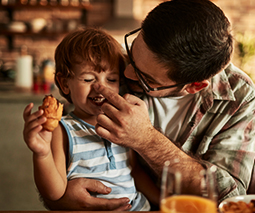The truth about childproof packaging and caps

Do you know what one of the most common causes of childhood poisoning is? It’s an everyday product that you will find in almost every home, car or handbag.
It’s paracetamol.
In 2016, the Victorian Poisons Information Centre received 2,443 calls about paracetamol poisoning. The majority of calls related to children aged between 1 – 4 years. This is not surprising, as toddlers will put anything they can find into their mouths and often what they do find – is paracetamol.
Read more about child safety:
- Safety study: Nearly all parents are using their baby’s car seat incorrectly
- The photos every parent needs to see if your child uses a car seat
- Parents warned NOT to rely on baby monitors to keep babies safe
When it comes to medicines and other poisonous products like household cleaners, the reality is that the caps on these products are child-resistant, not childproof.
What’s the difference?
Well, child-resistant packaging is designed to be difficult to open, but not impossible. For packaging to be deemed child resistant, a sample of 200 children between the ages of 3 1/2 and 4 1/2 test to see if they are able to open the packaging. If no more than 30 children can open the packaging in five minutes before a demonstration, and no more than 40 of the 200 children can open it after a demonstration, then the packaging is deemed ‘child resistant’.

The jaw-opening advantage
It is important to note that children who participate in the testing process are only able to use their hands to try and open the caps – something that many adults and elderly people struggle to do! However, parents of young children would know that they explore by placing everything in their mouths – if they do this, they are often able to bite down on the child-resistant cap and twist to open it. Sometimes older siblings can even help toddlers to open the caps!
The moral of the story is …
Parents and carers cannot rely on child-resistant packaging alone to keep children safe from accidental poisoning. All medications – including paracetamol – should be kept up high and out of reach in a locked cupboard. The same also goes for any poisonous products, including detergents and pesticides.
If you need to keep medication in the fridge, place it in a small, lockable container and push it towards the back of the fridge (out of eyesight of hungry children!).
And if you ever think your child has come into contact with a poisonous substance, take the product container to the phone and call the Poisons Information Centre on 13 11 26 – this is a great number to have saved as a contact in your home and mobile phone!
For more information on reducing the risk of poisoning in your home, check out Kidsafe Victoria’s fact sheet.
This post is republished with permission from Kidsafe Victoria.









